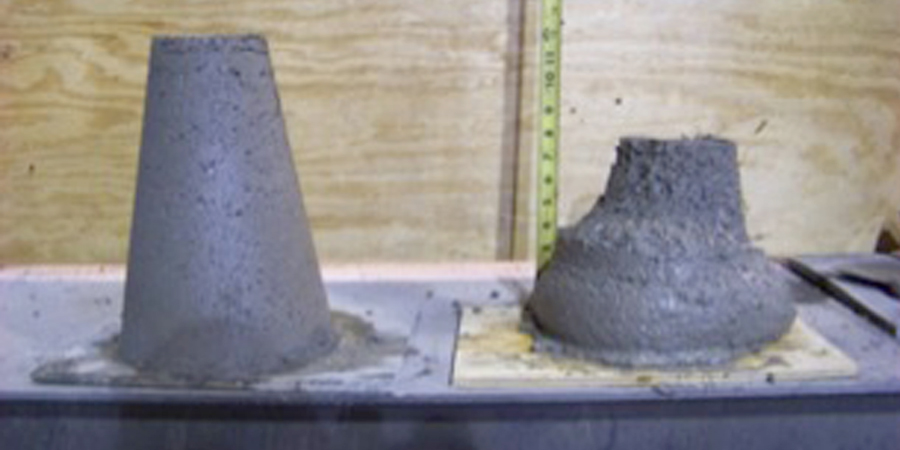Slat University is a series of articles providing useful information on manufacturing, handling and maintaining concrete slats.
Water: Most crucial component in a precast concrete mix.
Anybody who has ever poured concrete is familiar with the adage "the less water you use, the stronger the concrete will be."
Here's why.
 Excess water evaporates leaving behind large voids weakening the final product.
Excess water evaporates leaving behind large voids weakening the final product.
Water added to the dry ingredients begins a chemical reaction with the cement powder known as hydration, which bonds the aggregates together, creating the synthetic rock known as concrete. Any additional water added, beyond that needed for hydration, only creates larger spaces between the aggregates in the mix. These voids cause the concrete to be weaker and more porous.

Every additional inch of slump decreases the final strength by approximately 500 psi.
Concrete formulated with a minimal amount of water is known as dry-cast concrete. To put this is in more familiar terms, dry- cast concrete exhibits a slump of less than a 1/4-inch. Ready-mix concrete is typically formulated to have a four-inch slump. As a general rule, every additional inch of slump decreases strength by approximately 500 pounds per square inch. So for example, if a dry cast mix is designed to be 6000 psi, adding water to make it a four-inch slump could reduce the strength of the final product by as much as 2000 psi.
Also, a dry cast product is also denser with fewer voids. As the excess water evaporates from the concrete with a higher water-cement ratio, microscopic pores are left behind. These pores allow acids from hog waste and feed ingredients to migrate into the concrete, causing faster deterioration of the slat.
If less water makes the best concrete why would any slat manufacturer ever add extra water?

Powerful rotoscreeds trowel dry cast concrete.
Dry cast concrete is very difficult to handle without mechanized equipment. Many manufacturers lack the equipment and know-how needed to place and finish dry cast mixes properly. Water is added to the concrete mix so it flows into the molds and can be troweled. While this may lead to manufacturing slats with a smoother physical appearance, the finished product will not be as durable or long-lasting as a dry cast slat.
Also, some manufacturers may not have the technology to batch dry cast formulations consistently. To properly make dry cast concrete it is necessary to use state of the art batching equipment that measures the amount of moisture in the sand and aggregates and adjusts the amounts of these ingredients as well as the added water. These adjustments ensure that the final mix is always the same and doesn't vary during wet or dry weather.












 Україна
Україна Méjico
Méjico



